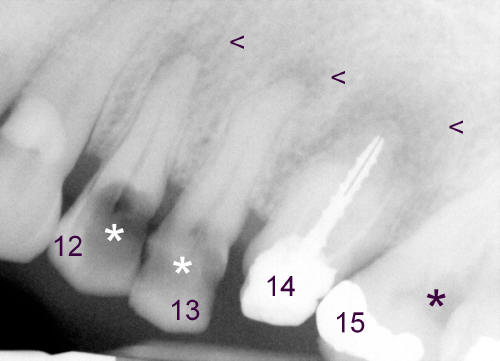
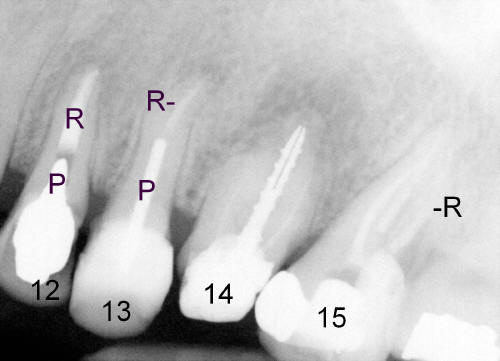
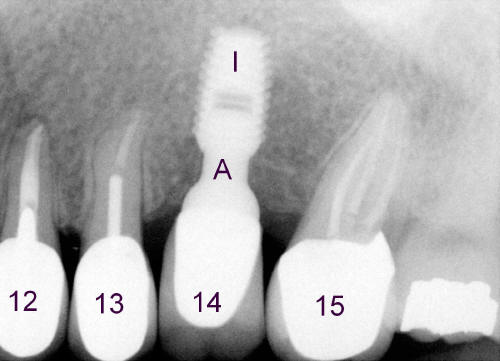
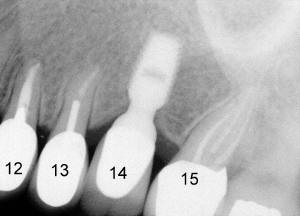
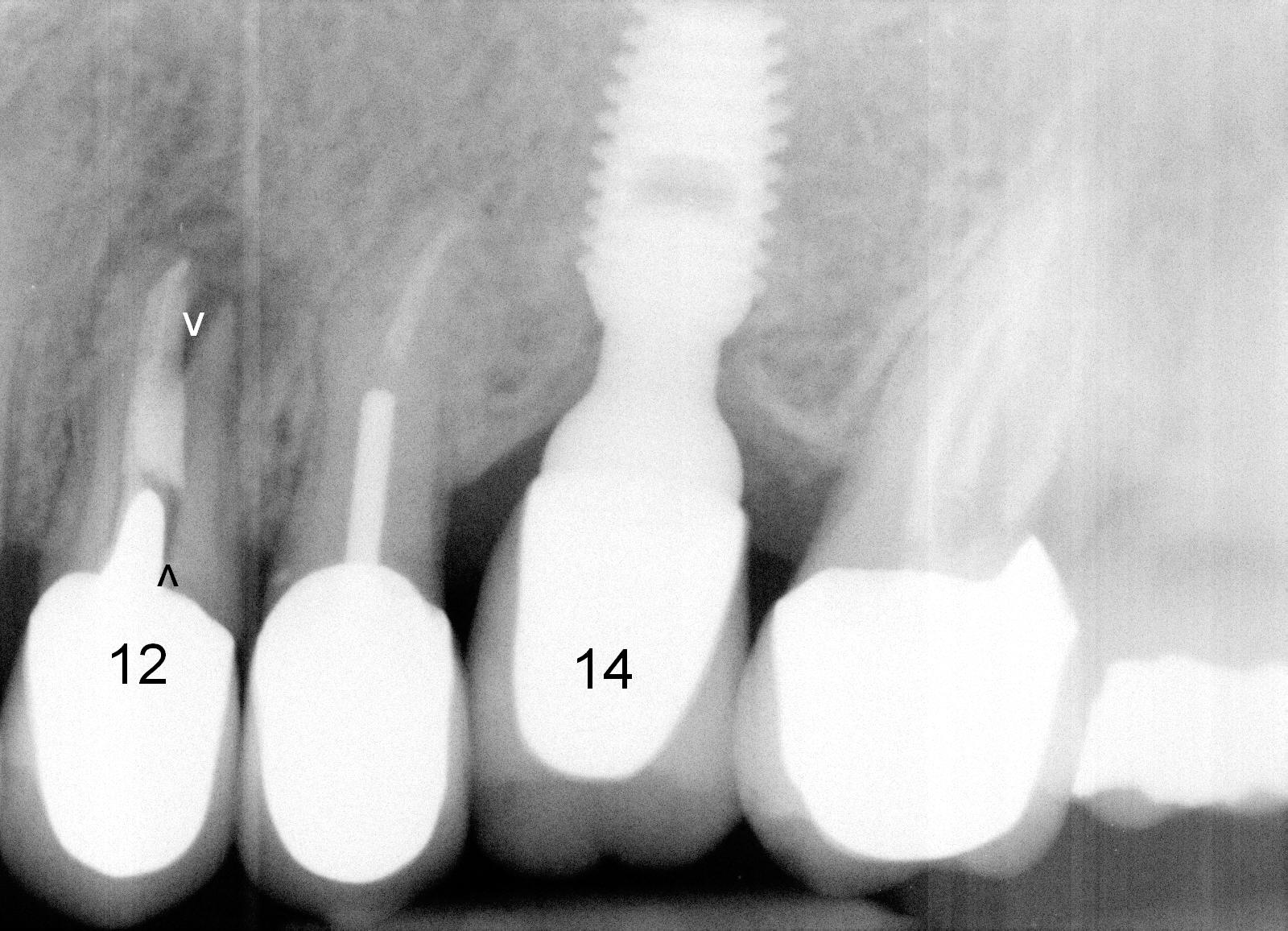
 |
 |
 |
| Fig.1 | Fig.2 | Fig.3 |
 |
 |
|
| Fig.4 | Fig.5 |
Dental Education Lecture: All-around Treatment
Mrs. Yan has 4 broken teeth in one area (upper left) of her mouth (#12-15 in Fig.1). The teeth #12 and 13 have large cavities (*) with root tip infection (<). The tooth #14 has been treated, but the treatment fails with very severe root tip infection (<). This tooth cannot be saved. There is a relatively small cavity in the back part of the tooth #15 (*), but it causes severe toothache. The cavity is very close to the nerve. In brief, all of these four teeth need treatment.
First of all, root canal is done for the teeth #12,13 and 15 (R in Fig.2; #12,15 by Dr. Bilal Khan). Since the destruction of #12 and 13 is big, posts are made (P). Then crowns are made for #12,13 and 15. Once the root tip infection of #12 and 13 is controlled by root canal, the tooth #14 is extracted.
After the wound of #14 is healed, an implant is placed (I in Fig.3). When the implant binds with the bone, an abutment (A) is inserted into the implant. Finally, a crown is cemented into the abutment (#14). Mrs. Yen is expected to chew normally. In addition, the root tip infection of the teeth #12 and 13 disappears, as compared to arrowheads in Fig. 1. It takes more than 2 years to finish the all-around treatment.
Fig.4 is taken 2 years 4 months after treatment. There is no sign of infection. The patient remains pain free. Bone around the implant is more solid than before.
Four years later, bone density around the implant threads continues to increase (Fig.5: #14), while the root of the tooth #12 splits (arrowheads). It suggests that the implant lasts longer than the tooth which has been treated.
Xin Wei, DDS, PhD, MS 1st edition 05/08/2010, last revision 07/11/2015